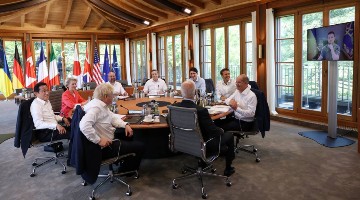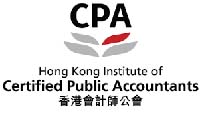Reliable sources at Schloss Elmau tell me that most of the talk at the meeting of the G7 and friends last month was on What To Do About Russia? but there was at least one item on What To Do About China? The US had a proposal for a Partnership for Global Infrastructure and Investment (PGII) (here, here and here) to mobilise $600 billion of funding by 2027 for health, digital connectivity, gender equality and climate / energy in low and middle income countries. The US would contribute $200 billion and the EU €300 billion.
So, is this the West’s long – awaited answer to China’s Belt & Road Initiative?
Well, it’s an improvement on past responses which included Barack Obama discouraging other countries from joining the Asian Infrastructure Investment Bank (he failed; besides, the AIIB’s Jin Liqun has stressed to me (and others …) how its lending standards are more akin to those of the ADB and IFC than to BRI’s); the mysteriously named Blue Dot Network to certify projects for ESG purposes (underwhelming); or disparaging the likes of Hambantota port in Sri Lanka as “debt trap diplomacy” (misleading). As you would expect, large numbers are involved – but there is little detail. Consider:
- The target countries are indeed similar to the BRI’s. This is, of course, geopolitics writ large. NATO is to seemingly extend its geographical coverage so as to worry about China, inviting friends from the Pacific to its summit in Madrid; the Partners in the Blue Pacific pact will worry about the Solomons; and China is excluded from the US’s Indo – Pacific Economic Framework. Amidst this outbreak of jaw-jaw, the US’ Antony Blinken promised to “invest, align, compete”.
- How fresh are the G7 funds? Much the same proposal was aired at the meeting in Carbis Bay last June when it was called Build Back Better World; the EU’s money will probably comprise its Global Gateway scheme launched in December; the UK’s money will probably include the $4 billion from its Clean Green Initiative pledged in January. The rest will then come from that traditional save – all, the private sector. But words are cheap: if there are investible projects available, the private sector will come anyway. Several pre – existing projects are mentioned so these are rebranding rather than fresh funds – the BRI did the same thing when it launched.
- There is no word, not even a cheap one, on what risks this new money will take. Private sector appetite is plentiful for projects which have survived the development stage, been built and proven the viability of their first few years of operations. (Brookfield has just raised $15 billion for its Global Transition Fund, howsoever defined.) So, will the G7 money add value by taking first loss or development risk ahead of the market? Much of it would indeed need to come from govts and intermediary players such as the development banks who are meant to take a degree of non – commercial risk because they are better able to control it or because they can take a bigger hit for the public good.
- The focus of the G7 funds is strange. No transport, water or natural resources? How often can investing in a project be characterised as addressing gender equality? Health breaks down into private hospitals patronised by people who can pay or a bureaucracy run by the state.
BRI got quite a head start. Launched in 2013 with almost exclusively Chinese players, $1.9 trillion had been committed to BRI projects by Q1 2020 with a further $2.1 trillion for projects “with Chinese involvement” according to Refinitiv (there is no central registry; definitions and interpretations vary). Lenders from the West rarely got a look in. Not only Big, however, early BRI deals were also Bold in terms of risks assumed by Chinese parties, usually Sinosure, and, in due course, Bad in that China will have lost a lot money on BRI; there were often good reasons for the West to not venture into certain countries. But consequences were also borne by locals when practice was less than best (… in the eyes of the West; expectations around ESG have since risen further in the wake of Covid). It is here where the West can compete so long as host govts are prepared to spend a bit more. As it happens, appetite for BRI had been reined in anyway as lessons were learned and wounds licked by both sides in Pakistan, Myanmar, Kenya, Sri Lanka and more – see here, here, here, here, here and here. BRI is enshrined in the Chinese constitution alongside Xi Jinping thought but is now being rebranded as a Global Development Initiative (details to follow). If, as a result, China and host govts structure projects on a more sustainable basis, the World will indeed be a better place.
The biggest blockage to deal flow has long been host govts’ inability / unwillingness to Properly Project Projects (the “other” PPP) which are needed by their citizenry and which can be paid for by users or by governments on behalf of beneficiaries. Foreigners’ well – meaning money goes much further if it pays for advice on how to structure a project on a resilient basis which can then be financed from the deeper (and more disciplined) pockets of the private sector than it does if thrown at lending to an ill – conceived one. Advising govts, sponsors and lenders on how to structure a project on a resilient basis is what Logie Group does. Host govts, previously faced with only one willing supplier of funds, should now encourage a bit of competition between two. Back in the 1960s, Afghanistan called this tactic bi-tarafi (“without sides”). It may not have turned out so well for the Afghans but then they didn’t get advice from Logie Group.







